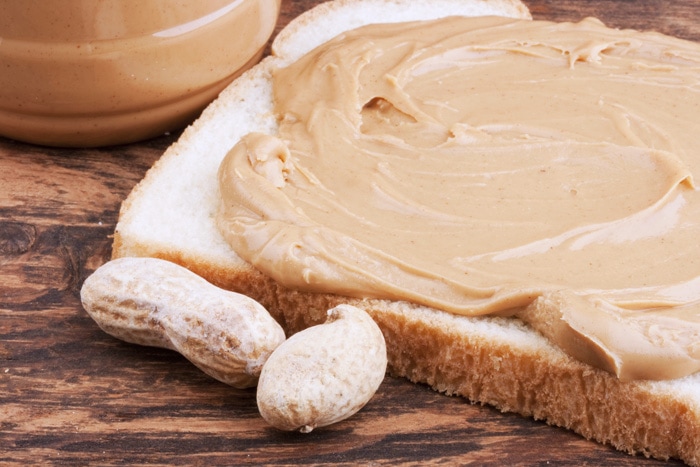
Written By: Owennie Lee, RD
Title: Registered Dietitian
Alumni: University of British Columbia
Last Updated on:

Although peanut butter is arguably one the most popular pantry staple items in America after bread and milk, it might have crossed your mind to branch out and try the other wonderful varieties that the world of nut butters has to offer. But how to choose those that are not only delicious but also good for you?

Table of Contents
Be it peanut butter or butters made from other nuts (e.g., almond and hazelnut), the first thing you need to pay attention to is the ingredient list. A natural, wholesome nut butter should contain only nuts and perhaps salt. Kettle’s line-up of nut butters and Adam’s 100% Natural Peanut Butter are prime examples. Some other natural nut butters, such as Barney Butter, contain almonds, evaporated cane juice (a source of sugar), palm fruit oil (to prevent oil separation), and sea salt. These are still far better than the processed varieties, such as Jif and Skippy’s regular lines, which all contain partially and fully hydrogenated vegetable oils (sources of trans fat), and additives such as mono- and diglycerides.
In addition to your basic nut butters, there are also a number of flavored, “extra-creamy,” or blended nut butters out there. The rule of thumb is, the further away from the nuts’ natural form, the more processing and additives tend to go into the jars. The most well-known example is perhaps Nutella, a popular hazelnut spread that actually contains more sugar and peanut oil than hazelnuts, and is also laced with hydrogenated oils and other additives.
The peanut is technically not a nut but a legume, and another legume that can be made into a spread is soy. Soy butter that is made from toasted soy nuts actually tastes remarkably similar to peanut butter, with the exception of a slightly sweeter aftertaste. Other seeds, such as sesame, sunflower, and pumpkin seeds, are also available in spreads. These are all tasty alternatives to good old peanut butter, especially if you have a peanut or tree nut allergy.
As different as they may taste, nut butters are very similar in their calories, fat, and fiber contents. Typically, a tablespoon of nut or soy butter contains roughly 100 calories, 8 grams of fat, and 1 gram of fiber. The reduced-fat varieties will save you about 2 grams of fat per tablespoon, but since the calories are the same as their regular counterparts and they are heavily loaded with additives, it is probably wise to skip the reduced-fat nut butters altogether. Outside of calories and fat, almond butter and sunflower butter are actually nutritionally superior to peanut butter in that they are higher in Vitamin E and lower in saturated fat than peanut butter.
If you are choosing an alternative nut butter because of a peanut or tree nut allergy, it is best to check with your allergist as well as the allergen declaration on the label, as cross-contamination of allergens in the manufacturing plants is possible. If you are a mom looking to introduce solids to your baby at 6 months, the American Academy of Pediatrics reversed its stance on delaying the introduction of common allergens, including nuts and peanuts, in 2008. So you may now choose to introduce peanuts and tree nuts at the same time you introduce other foods to your baby.
There is a truly wonderful world of nut butters beyond peanut butter. Be sure to try them, but be a savvy label-reader – less is definitely more when it comes to ingredients. Always check with your allergist if you have a peanut or tree nut allergy for safe alternatives.
Alumni: University of British Columbia – Owennie is a registered dietitian with a soft spot for chocolate and coffee. She is a believer in balance and moderation, and is committed to keeping healthy eating enjoyable and fun. Owennie received her dietetics training in Vancouver, and is a member of Dietitians of Canada and the College of Dietitians of British Columbia. She has experience in a wide variety of settings, such as clinical nutrition, long-term care and outpatient counseling. Owennie has also worked for a community nutrition hotline and participated regularly as a guest radio host, where she enjoyed sharing her passion and knowledge about food and nutrition with people.